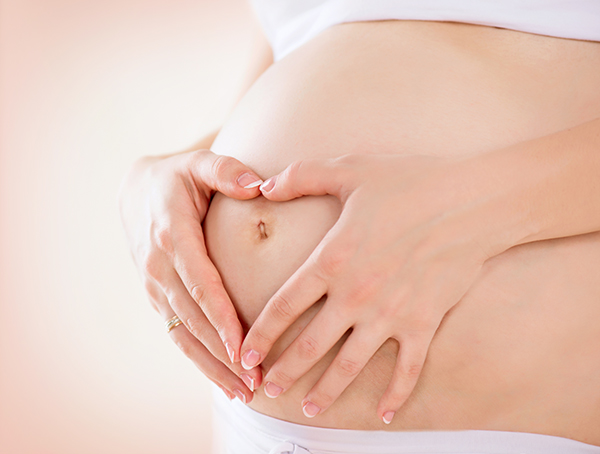What is Non-Invasive Prenatal Screening (NIPS)?
Non-Invasive Prenatal Screening (NIPS) tests a small fragment of fetal fraction circulating in a pregnant woman’s blood using the most advanced DNA analysis technology, and assesses the risk of fetus with Down's syndrome and other genetic diseases. The test takes sample of 10ml blood from a pregnant woman to detect any count abnormality with fetal chromosomes. Using next generation sequencing (NGS) to read DNA fraction information incorporated with the comparison between bioinformatics technology and known database, the distribution of DNA molecular weight is determined for any abnormality. There are various diseases caused by an abnormal number of chromosomes. When detected, it could mean that the fetus could get trisomy. This method tests Trisomy 21 (Down's syndrome), Trisomy 18 (Edwards syndrome), Trisomy 13 (Patau syndrome), and sex chromosomes screening with precision higher than 99%.
Test Advantages
- Sample the peripheral blood of pregnant women to avoid the risk of miscarriage as well as the psychological stress and anxiety due to amniocentesis.
- Women going into 10th week of pregnancy can take the test and the results will be available between 10~14 working days.
- In the event of abnormality with the test results of any chromosome count, the department will provide Array-based Comparative Genomic Hybridization analysis aCGH for free.
Test Limitations
This test is a non-invasive screening that avoids all risks associated with invasive test. This detection rates of Trisomy 21 (Down's syndrome), Trisomy 18 (Edwards syndrome), Trisomy 13 (Patau syndrome) using this method is as high as 99.5%, with false positives < 0.5%. Nonetheless all test methods have limitations and although this method is the latest method in genomic biotechnology today, there are still some limitations as described below:
- Not all chromosome abnormality related disease could be tested using this method. For example, microdeletion/micro-increase of genome (≦5MB), point mutation, chromosome recombination, chromosome inversion, uniparental disomy of chromosome, chromosome unbalance translocation, chromosome balanced translocation, chromosomal mosaicism, and other abnormalities. For this reason, even if the test result is low risk or no detection, it could not be ruled out that the fetus could possibly have other chromosome diseases.
- If the pregnant woman has chromosome of aneuploidy, or if the fetus is fraternal twins, stillbirth in multiple births, the pregnant woman has less than 10 weeks of pregnancy, these conditions will interfere the fetal chromosome signal and consequently affects the accuracy of screening (The test rate of twins under 13/18/21 Trisomy X syndrome is >98%。)
- This test could not detect the risk of fetus with open neural tube defects.
Test Method
The blood of peripheral veins of pregnant women contain Cell-free fetal DNA (cffDNA. Hence, this test method collects the blood from peripheral veins of women going into 10th week of pregnancy and conducts testing trough the following procedures:
- Separate the plasma from the blood of the peripheral veins of pregnant women and extract the cell-free fetal DNA.
- Prepare the cell-free fetal DNA in the DNA library and determine the nucleic acid sequence of DNA through next generation sequencing.
- The sequencing results will be analyzed using bioinformatics and compared with the database to finally assess the screening results of abnormalities of chromosome ploidy.
Test Process
Doctor consultation (going into 10th week of pregnancy)→ Draw one catheter of pregnant women’s blood (Do not refrigerate)→Report results will be available in 10~14 days after specimen collection→ High Risk →aCGH confirmation
Test Report
This test is a screening test and not a diagnosis test, which is only provided as reference for medical professionals. The doctors will have the final say on the clinical significance and treatment recommendations.
|
Tests
|
NIPS
|
NIPS + microdeletion
|
|
|
Target
|
Available to all pregnant women beginning at 10 weeks of pregnancy
|
||
|
Description of Test
|
26 Chromosome Aneuploidies
|
26 Chromosome Aneuploidies and 5 microdeletion syndromes
|
|
|
22 pairs of autosomes abnormalities
4 Sex chromosomal abnormalities
|
22 pairs of autosomes abnormalities
4 Sex chromosomal abnormalities
|
5 microdeletion Syndrome
|
|
|
Detection Rate
|
The detection rates of Trisomy 21(Down's syndrome), Trisomy 18 (Edwards syndrome), Trisomy 13 (Patau syndrome) >99.5%, false positives<0.5%.
Sex chromosome abnormality test rate >90%。
|
||
|
Abnormality Report
|
In the event of abnormality with the test results of any chromosome count, the department will provide Array-based Comparative Genomic Hybridization analysis aCGH for free.
|
||

Frequently Asked Question -Q&A
- How can the blood test in pregnant women detect Down’s syndrome in fetus?
In the process of pregnancy, the mother deliver oxygen and nutrients needed to the fetus through placenta. Meanwhile, some cell-free fetal DNA from placenta cells will also be released to the blood of the mother. Therefore, blood analysis can reveal any abnormality with the number of placenta chromosomes, in order to find out if the fetus falls in the high risk group for Down's syndrome.
- What is the difference between Non-Invasive Prenatal Screening and Amniocentesis?
Non-Invasive Prenatal Screening mainly draws the peripheral blood of the pregnant women to analyze the abnormality of chromosome numbers as the screening test, which could avoid the risk of miscarriage caused by amniocentesis. Moreover, the aCGH and chromosome analysis after amniocentesis directly test the fetal cells, which has irreplaceability while the scope of testing also varies. For example, the small-scale mutations of chromosomes or the inversion, mosaicism, and unbalanced translocation, and chromosomal abnormalities.

